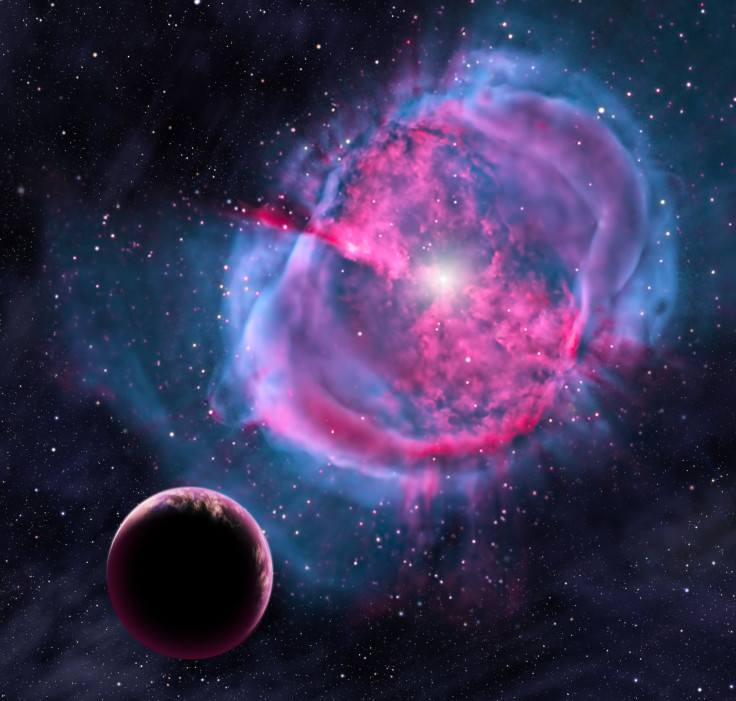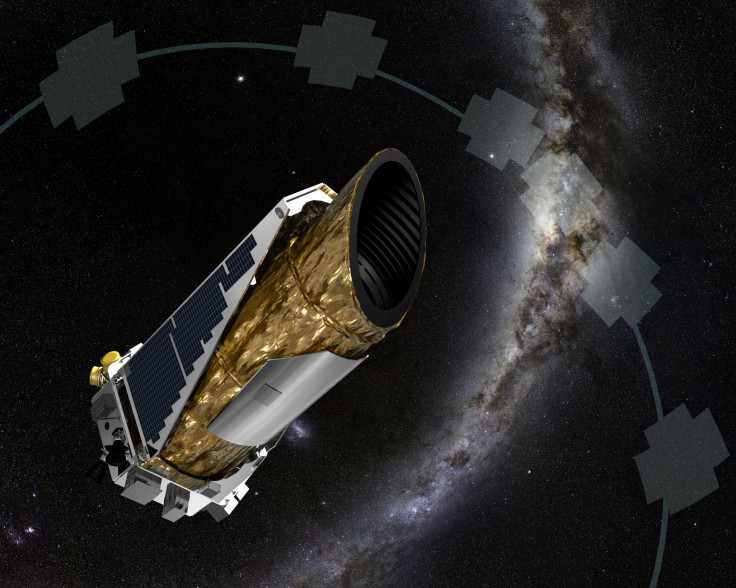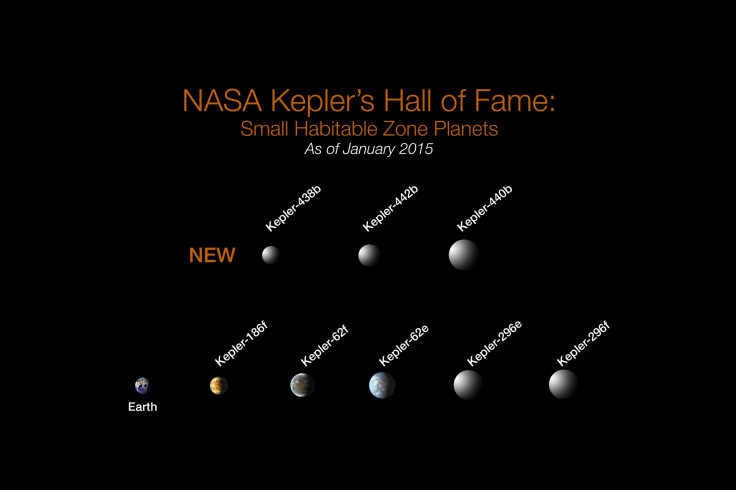Kepler Mission Reaches 1,000 Exoplanets, Latest Earth-Like Discoveries Are In 'Goldilocks' Zone

Whenever astronomers announce a discovery involving NASA's Kepler space telescope, the "Goldilocks" zone and rocky exoplanets, chances are it's cause for excitement. Scientists Tuesday confirmed eight "Earth-like" exoplanets orbiting in the habitable zone of their host star. The Kepler planet-hunting mission has been incredibly successful with the latest discoveries pushing the total number of exoplanets discovered by the space telescope to more than 1,000.
As part of the confirmation of eight exoplanets, the Kepler team added 554 candidate planets, bringing the total number to 4,157. Of the eight planets confirmed, three are within the habitable zone of their host stars and two, Kepler-438b and Kepler-442b, are believed to be rocky exoplanets slightly bigger than Earth. The study was led by Guillermo Torres, from the Harvard-Smithsonian Center for Astrophysics (CfA). Astronomers call the area around the host star where temperatures are neither too cool nor too hot to sustain liquid water the "Goldilocks" zone.

"With each new discovery of these small, possibly rocky worlds, our confidence strengthens in the determination of the true frequency of planets like Earth. The day is on the horizon when we’ll know how common temperate, rocky planets like Earth are," Doug Caldwell, SETI Institute Kepler scientist at NASA's Ames Research Center, said in a statement.
Kepler-438b is 12 percent larger than Earth and 475 light-years away. The exoplanet orbits its host star once every 35.2 days. Kepler-442b is much farther away, 1,100 light-years, and is 33 percent bigger than our planet. The exoplanet orbits its star every 112 days. The exoplanets were discovered around stars in the constellation of Lyra. Kepler-438b and Kepler-442b orbit stars that are cooler than our Sun, which means shorter orbital periods and a habitable zone closer to the star. Kepler-438b has a 70 percent chance of being rocky while Kepler-442b has a 60 percent of being a rocky exoplanet, CfA reported.
Of the two planets, Kepler-442b has the better chance of being in the habitable zone, based on how much light the exoplanet receives. Torres and her team used Blender, a computer program developed by Torres and Francois Fressin. Blender analyzes Kepler data to determine which candidates are the most likely to be planets. The team followed up this evaluation with a year of observation.

Earlier this year, scientists announced the discovery of Kepler-186f, a rocky exoplanet just 1.1 times the size of Earth and in the habitable zone of its host star. The research was presented at a meeting of the American Astronomical Society and accepted for publication in the Astrophysical Journal.
© Copyright IBTimes 2024. All rights reserved.






















